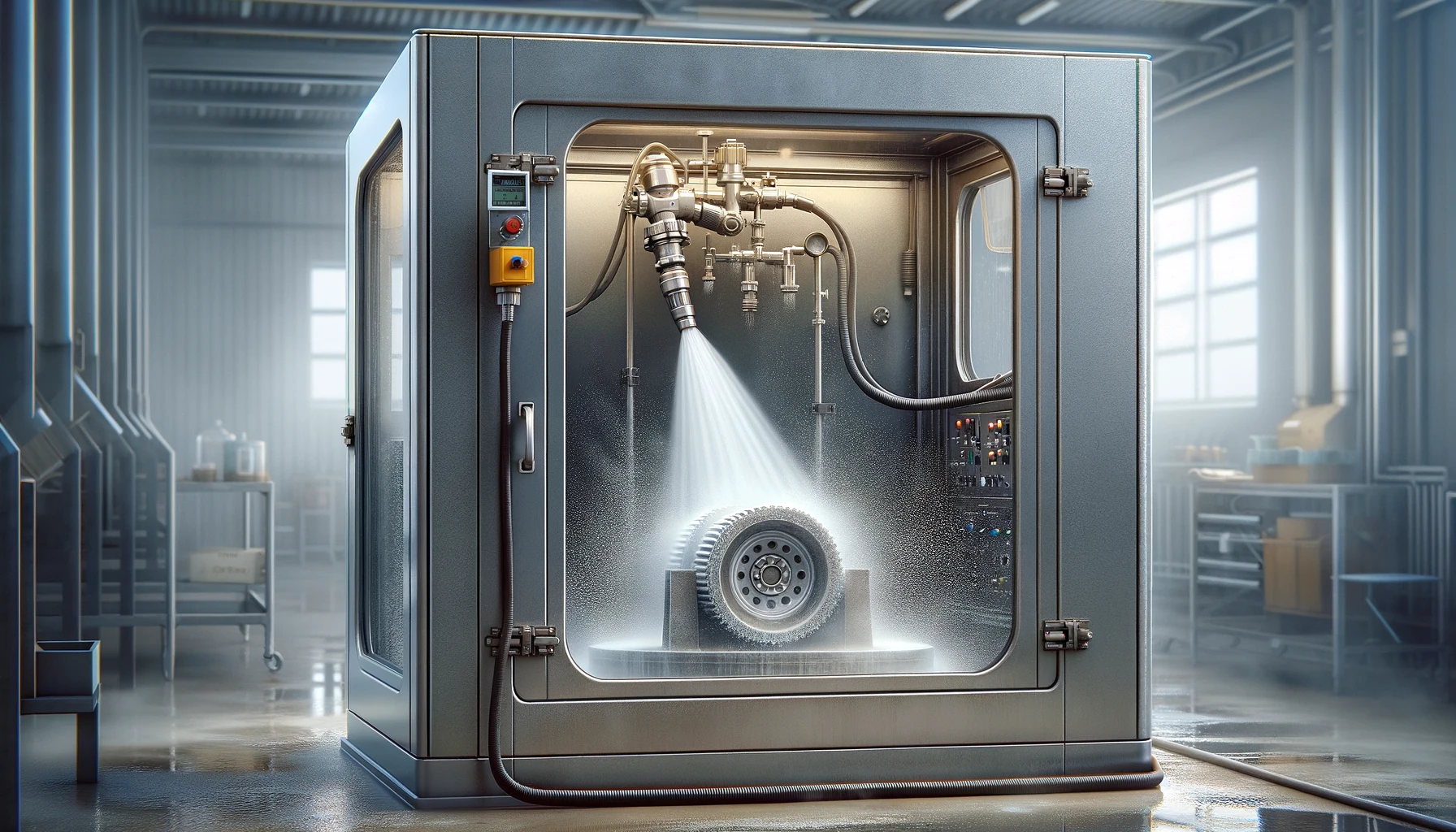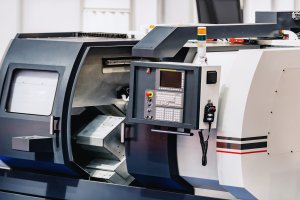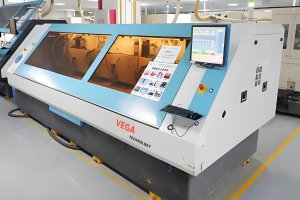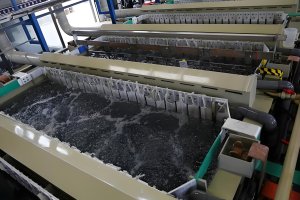Understanding Bead Blasting Process in CNC Machining
Bead blasting is a critical surface treatment in CNC (Computer Numerical Control) machining, playing a pivotal role in enhancing the aesthetic appeal, surface finish, and longevity of machined parts. This process involves propelling fine beads at high speeds towards the surface of a workpiece. It’s a method preferred for its ability to evenly clean or finish a surface without compromising the integrity of the material.
In CNC machining, bead blasting is often used as a post-processing technique. After a part has been machined, bead blasting can be employed to remove any remaining surface imperfections, such as burrs or tool marks, thus enhancing the part’s overall quality. The process is not merely about aesthetics; it also contributes to the functionality of parts, particularly those designed for critical applications in industries like aerospace, automotive, and medical devices.
The effectiveness of bead blasting is governed by several factors, including the type of beads used (glass, ceramic, steel), the pressure at which they are propelled, and the angle and distance from which they are directed at the target surface. Each of these factors must be meticulously controlled to achieve the desired finish, making the expertise of the operator crucial to the process.
Case Study: A leading aerospace components manufacturer was facing challenges with inconsistent finishes on turbine blades, leading to potential flight safety issues. By fine-tuning their bead blasting process, specifically by adjusting the pressure and angle of bead projection, they achieved a uniform surface finish that met rigorous industry standards, thus significantly reducing the risk of component failure.
Key Factors Influencing Bead Blasting Efficiency
The efficiency and success of the bead blasting process in CNC machining are contingent upon a myriad of factors. Understanding and controlling these factors can significantly impact the quality of the finish and the overall efficiency of the process.
- Bead Type: The material and size of the beads play a critical role in determining the aggressiveness and finish of the blasting process. For instance, glass beads are known for their ability to clean surfaces without altering the metal’s dimensional properties, making them ideal for applications requiring a high degree of precision.
- Blasting Pressure: The pressure at which beads are propelled against the workpiece significantly impacts the outcome. Higher pressures can lead to a more aggressive blasting process, which, while effective for removing tougher surface impurities, can also risk damaging the workpiece if not carefully managed.
- Impact Angle: The angle at which beads hit the surface affects the coverage and uniformity of the finish. A perpendicular impact is more aggressive and is used for heavy cleaning tasks, while an oblique angle offers a gentler approach, often preferred for finishing.
- Duration: The length of time the workpiece is exposed to the bead blasting can alter the final outcome. Longer exposure times increase the risk of over-blasting, which can damage the surface of the workpiece.
Data Table: Optimal Bead Blasting Parameters
| Bead Type | Optimal Pressure (PSI) | Impact Angle (Degrees) | Exposure Time (Seconds) |
|---|---|---|---|
| Glass | 60-80 | 60-75 | 30-60 |
| Ceramic | 80-100 | 45-60 | 45-90 |
| Steel | 100-120 | 30-45 | 60-120 |
| Plastic | 40-60 | 75-90 | 15-45 |
Selection of Beads for Optimal Surface Treatment
Choosing the right bead type is crucial for achieving the desired surface finish and ensuring the integrity of the workpiece is not compromised. The selection is influenced by the material of the workpiece, the required finish, and the specific characteristics of the bead material.
- Glass Beads: Ideal for cleaning, polishing, and finishing. They’re less abrasive, making them suitable for delicate parts.
- Ceramic Beads: Harder and more aggressive than glass. Suitable for tougher cleaning tasks and creating a more textured surface.
- Steel Beads: Used for the most aggressive blasting applications, capable of removing heavy material and providing a rough surface finish.
- Plastic Beads: The least aggressive option, best for very delicate or soft surfaces where minimal abrasiveness is required.
Case Study: A vintage car restoration workshop specialized in restoring classic car parts to their original glory. They opted for glass beads for bead blasting, as the gentle yet effective cleaning action of the glass beads was perfect for handling the delicate, often aged materials without risking damage. The glass beads effectively removed years of grime and oxidation, restoring the parts to their original luster without altering the intricate details that were crucial to maintaining the cars’ authentic look.
Advanced Techniques in Bead Blasting for Enhanced Precision
As the demand for precision and consistency in surface finishes increases, advanced bead blasting techniques have been developed. These methods leverage technology and innovative practices to enhance the precision and efficiency of bead blasting in CNC machining.
- Wet Blasting: This technique combines the abrasive beads with water to create a slurry. The addition of water reduces dust and friction heat, allowing for a finer control over the surface finish. This is particularly beneficial for delicate parts or when a highly precise finish is required.
- Automated Blasting: Automation in bead blasting involves the use of robotic arms and computer programming to control the blasting process. This ensures consistent results across multiple parts and significantly reduces the potential for human error.
Data Table: Comparison of Advanced Bead Blasting Techniques
| Technique | Bead Type | Medium | Pressure (PSI) | Consistency | Application |
|---|---|---|---|---|---|
| Wet Blasting | Glass | Water | 40-70 | High | Delicate surfaces |
| Automated Blasting | Ceramic | Air | 60-90 | Very High | Large volume production |
| Robotic Blasting | Steel | Air | 80-110 | High | Heavy-duty cleaning |
Managing and Mitigating the Risks in Bead Blasting
Bead blasting, while an effective surface treatment method, is not devoid of risks. These can range from equipment wear and tear to the potential for substrate damage if the process is not properly managed. It’s imperative to have strategies in place to manage these risks to maintain the integrity of the workpiece and the safety of the operators.
- Regular Maintenance: Ensuring that the blasting equipment is regularly maintained and serviced can prevent malfunctions that might lead to inconsistent finishes or equipment breakdowns.
- Operator Training: Comprehensive training for operators on the nuances of bead blasting and the specific equipment used can minimize the risks associated with improper handling or settings that could damage the workpiece.
- Quality Control Measures: Implementing strict quality control measures, including regular checks on bead media quality and consistency, can help maintain the desired finish quality and prevent contamination.
Case Study: A high-tech engineering firm specializing in precision components for the medical industry faced challenges with surface contamination from bead blasting, leading to high rejection rates of critical parts. By implementing a rigorous quality control protocol that included regular equipment checks and bead media quality assessments, they were able to significantly reduce contamination issues, leading to improved part quality and reduced wastage.
Innovations and Future Directions in Bead Blasting Technology
The future of bead blasting in CNC machining is driven by continuous innovations aimed at improving precision, efficiency, and sustainability. As industries demand higher quality finishes and more environmentally friendly processes, the bead blasting technology evolves to meet these needs.
- Eco-friendly Beads: The development of biodegradable and recyclable bead media is on the rise, catering to the growing demand for sustainable manufacturing practices.
- Precision Control Technology: Advances in control technology are making it possible to achieve even greater precision in bead blasting, with automated systems capable of adjusting in real-time to the specific requirements of each part.
- Integrated Systems: The integration of bead blasting systems with other CNC machining processes is becoming more common, allowing for seamless transitions between machining and finishing, improving overall efficiency and reducing handling.
As the CNC machining industry continues to evolve, bead blasting remains a vital part of the manufacturing process. With advancements in technology and a focus on sustainability and efficiency, the future of bead blasting looks promising, offering even greater possibilities for precision surface treatment.
Other Articles You Might Enjoy
- Innovative CNC Machining for Advanced Spacecraft Components
Introduction: CNC Machining and its role in Spacecraft Components Computer Numerical Control (CNC) machining has, over the years, proven to be one of the most integral pillars within manufacturing industries.…
- Ceramic Tooling in CNC Machining: Breaking the Myths About Durability and Performance?
CNC Machining and Ceramic Tooling: Busting the Myths Computer Numerical Control (CNC) machining is an advanced method of manufacturing where pre-programmed software controls the movement of factory machinery, giving intricate…
- CNC Machining Parts Factory: Specializing in High-Quality Steel
Introduction to CNC Machining and its Significance CNC (Computer Numerical Control) machining is a critical component in modern manufacturing, responsible for executing complex cuts and designs with absolute precision. This…






